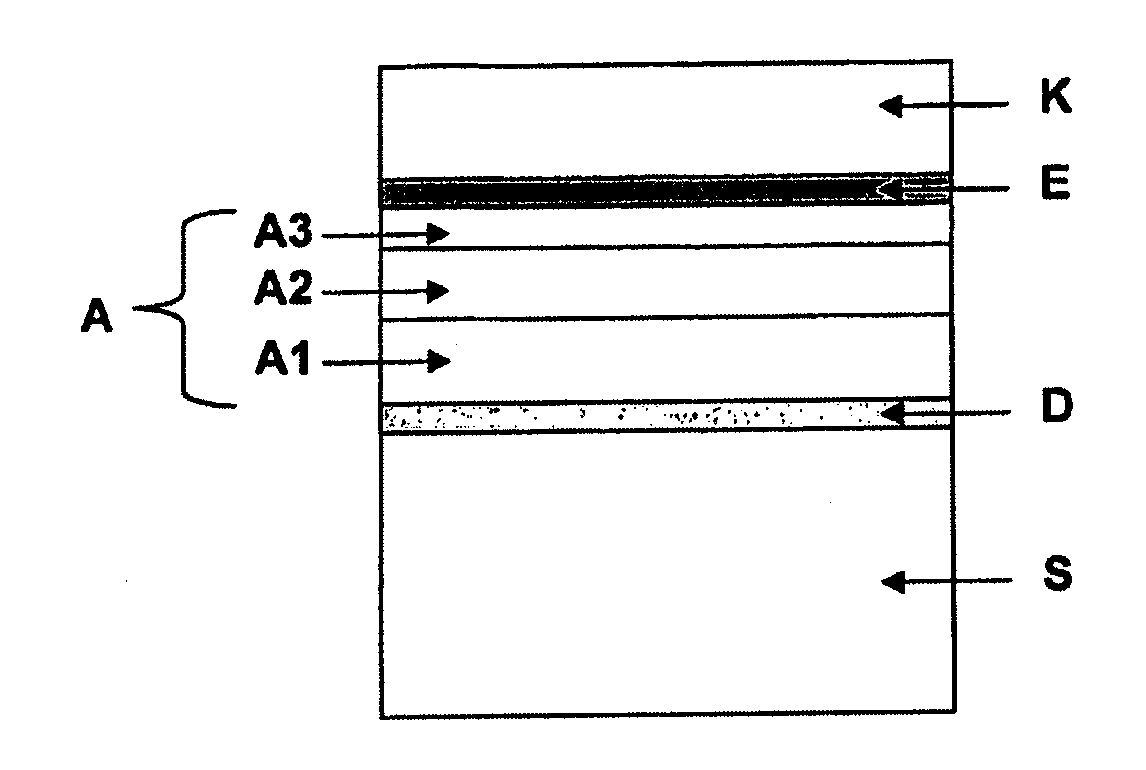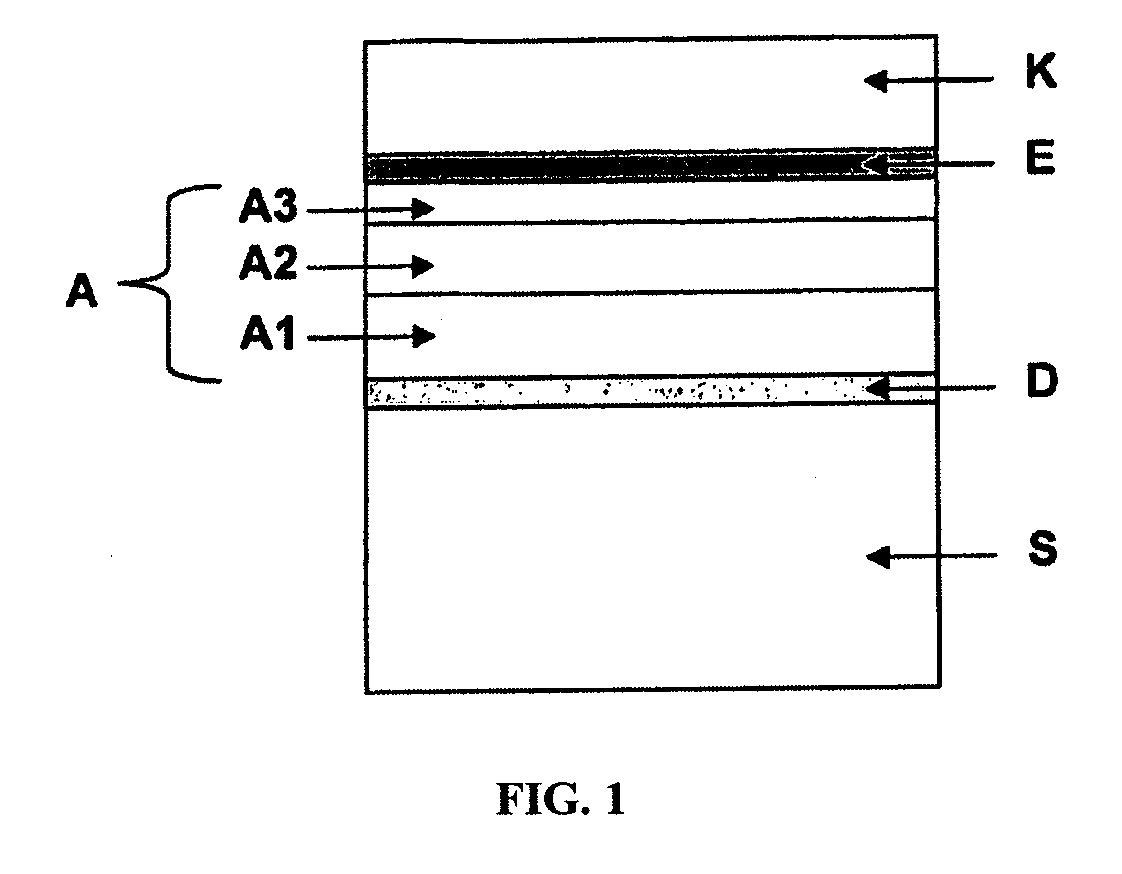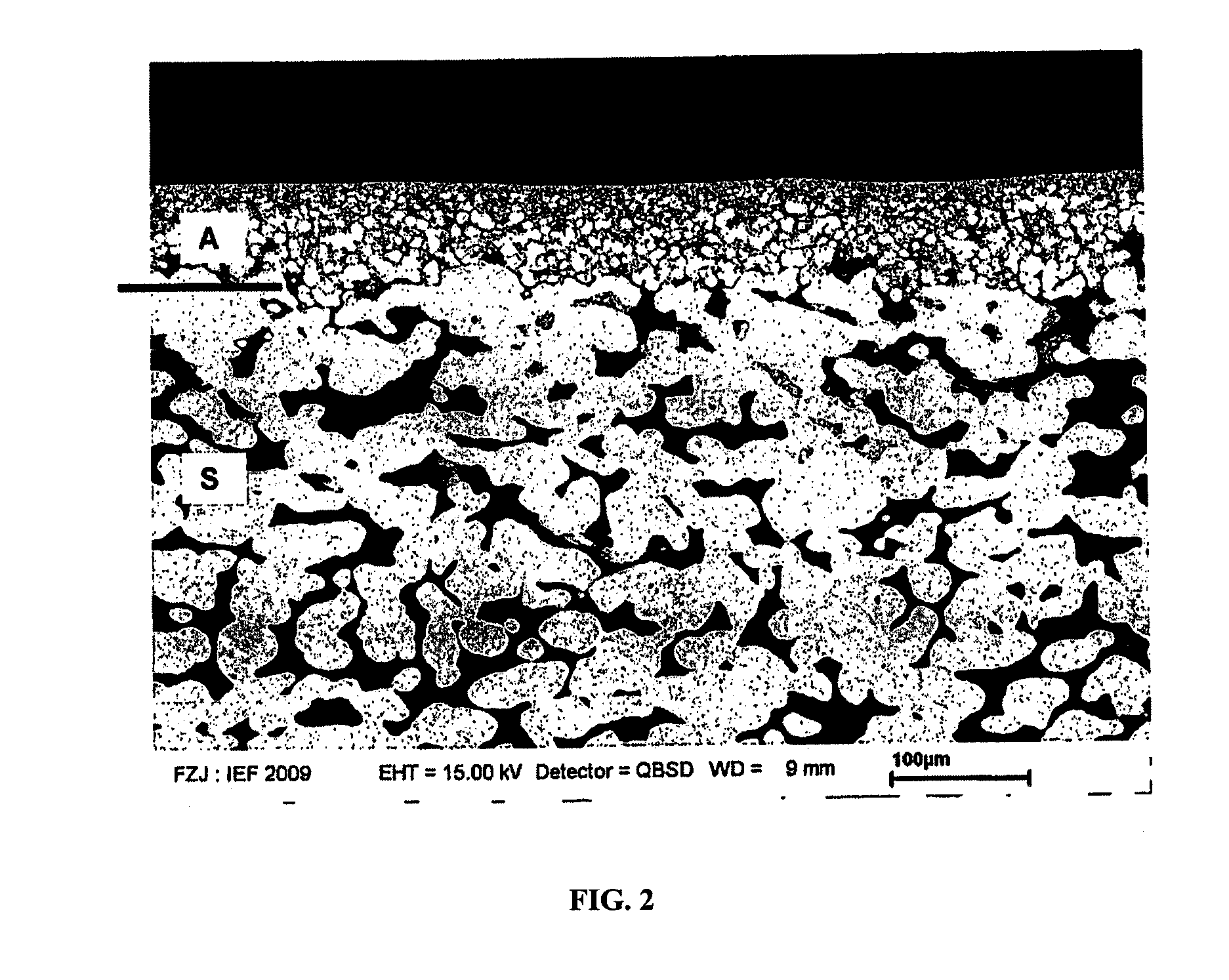Anode for a high-temperature fuel cell and production thereof
a high-temperature fuel cell and anode technology, applied in the direction of cell components, positive electrodes, electrochemical generators, etc., can solve the problems of high demands, entail for the operating process and the materials involved, and significantly reduce the effect of production costs
- Summary
- Abstract
- Description
- Claims
- Application Information
AI Technical Summary
Problems solved by technology
Method used
Image
Examples
Embodiment Construction
[0019]The object of the invention is achieved by an anode laminate for a metal-supported SOFC, to which a gas-tight thin-film electrolyte having a thickness of less than 10 μm can advantageously be applied by way of physical vapor deposition (PVD, for example sputtering or electron beam evaporation) or by way of sol-gel technology. For this purpose, the surface of the anode laminate according to the invention is smooth, having an average surface roughness Rq of less than 4 μm, preferably less than 3 μm, and still more preferably less than 2 μm, and having a root mean square micro-roughness Rqμ of less than 1 μm, and preferably less than 0.6 μm. The surface of the anode laminate, or the last layer of the anode laminate, preferably has a mean pore size of less than 1.5 μm, and preferably less than 0.8 μm. This is achieved by a coarse nickel phase and a finer ceramic phase (bimodal particle size distribution). The surface of the nickel phase, or the last layer of the anode laminate, pr...
PUM
 Login to View More
Login to View More Abstract
Description
Claims
Application Information
 Login to View More
Login to View More - R&D
- Intellectual Property
- Life Sciences
- Materials
- Tech Scout
- Unparalleled Data Quality
- Higher Quality Content
- 60% Fewer Hallucinations
Browse by: Latest US Patents, China's latest patents, Technical Efficacy Thesaurus, Application Domain, Technology Topic, Popular Technical Reports.
© 2025 PatSnap. All rights reserved.Legal|Privacy policy|Modern Slavery Act Transparency Statement|Sitemap|About US| Contact US: help@patsnap.com



